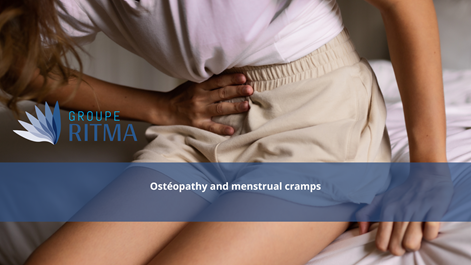
Chronicles
17 May 2023
Menstrual Cramps and Osteopathy

Menstrual cramps, also known as dysmenorrhea, are a common condition among many women of childbearing age. The cramps are characterized by lower abdominal pain that occurs before or during menstruation. Although some women may experience mild cramping, others may experience severe, incapacitating pain that can interfere with their daily activities.
Osteopathy is a therapeutic approach that focuses on the treatment of musculoskeletal disorders and body dysfunctions. It aims to restore balance and mobility to body structures to promote healing and overall well-being. When it comes to menstrual cramps, some osteopathic practitioners claim that this practice can help relieve symptoms and improve a woman's quality of life.
It should be noted that scientific studies on the effectiveness of osteopathy to specifically address menstrual cramps are limited. Most of the available evidence is based on individual testimonials and small studies. Nevertheless, some women report having benefited from osteopathy to relieve their symptoms of dysmenorrhea.
The osteopath, during a consultation, performs a complete assessment of the client, taking into account her posture, mobility and medical history. Depending on the results of this assessment, the osteopath uses techniques of gentle manipulation, joint mobilization and muscle relaxation to improve circulation, reduce tension and promote relaxation of the musculoskeletal system. Some practitioners may also focus on specific areas of the body, such as the pelvis, to relieve pain associated with menstrual cramps.
It is important to emphasize that osteopathy does not claim to directly treat the underlying causes of menstrual cramps, such as hormonal imbalances. Instead, it aims to alleviate symptoms by promoting better circulation and optimal musculoskeletal function. Some practitioners may also recommend lifestyle changes, such as regular exercise, a balanced diet, and stress management techniques, to complement osteopathic treatment.
It is important to note that each person reacts differently to osteopathic treatments and what works for some women may not work for others. Traditional medicine does not recognize osteopathy as a true science. However, there are now several studies that support osteopathy as a medical alternative. One example is the osteopathic care of low back pain that can be given with efficient results.
For its part, the World Health Organization (WHO) recognizes osteopathy as an independent health profession.
Therefore, it is essential to consult with a qualified medical professional and discuss the most appropriate treatment options for each individual.